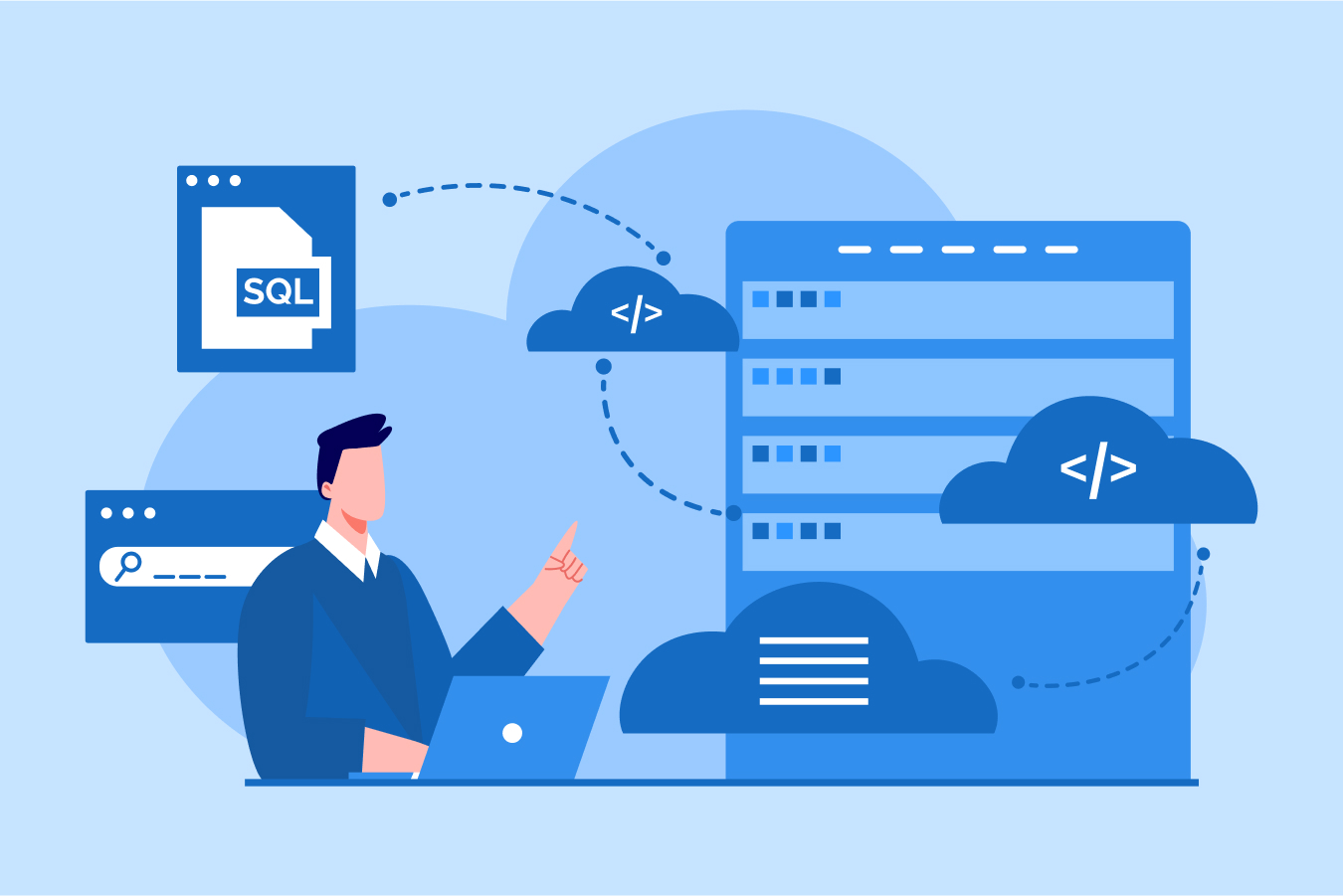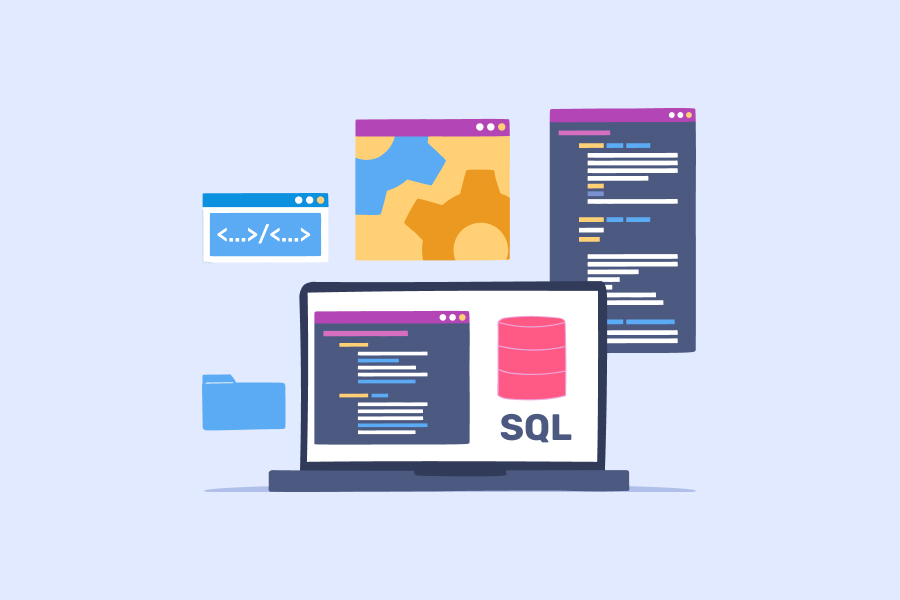Data Lake vs. Data Warehouse: A Comparative Guide
With the emergence of big data and cloud storage technology, businesses are looking for solutions to manage data. Two common options used by many businesses when it comes to handling big data are data lake and data warehouse. Each of them has its own unique features and benefits, and understanding the differences between them is essential for businesses looking to maximize their data-driven insights.
Despite their similarities, these two terms do not mean the same thing. In this blog, we will explore the battle of a data lake vs. a data warehouse and explain their uses.
What is a Data Lake?
A data lake is a storage repository that holds a vast amount of raw data in its native format, including structured, semi-structured, and unstructured data. The goal of the data lake is to provide an integration platform on which various types of analytics engines can be applied to the available types of data. This is done to produce new insights.
What is a Data Warehouse?
A data warehouse is a data management system designed to enable and support business intelligence (BI) activities, especially analytics. It focuses on performing queries and analysis with large amounts of historical data coming from various sources, such as application log files and transaction applications. You can take a data science course to get a better understanding of data structures.
Key Differences Between a Data Lake and a Data Warehouse
Here is a tabular representation of the differences between a data lake and a data warehouse.
| Differences | Data Warehouse | Data Lake |
| Storage Format | This only stores processed and refined data, which are usually in a text and number format. | This stores raw and unstructured data yet to be processed, such as log files, multimedia, etc. It uses more storage compared to a data warehouse. |
| Definition | Given that the data in a data warehouse has already been refined and processed, it can’t be malleable. Therefore, it cannot be used for different purposes except that which it has been predefined to do. | Due to the fact that this data is still in its raw form, it is ideal for machine learning as it can easily fit into new or different situations to adapt to user experiences. |
| Goal | Processed data is information that has been tailored for a specific purpose. Data warehouses only contain processed data, meaning all the stored data in them was intended to be used by the organization, and may need to be queried again later on. This saves storage space since there isn’t any wasted capacity resulting from unnecessary stockpiling of resources. | The goal of individual data within a data lake is not predetermined. Unstructured information enters the pool, sometimes for an intended purpose and other times with no intent at all. This makes it less sorted or filtered than what would be found inside traditional data warehouses. |
| Usage | Data warehouse is structured differently than data lake data storage, leading to several unique benefits. For example, their structure allows the processing and organization of data in a way that makes it easier for users to interpret what they’re looking at. However, this restrictive framework also means manipulation can be difficult or costly if changes need to happen along the way. | Due to the limited structure that data lake possesses, it has extremely few restrictions. |
| Difficulty and Readability | Processed data can be presented in a variety of ways, such as graphs, spreadsheets, and tables. This makes it easier for business users to digest the information accurately without needing extensive knowledge about the subject matter. Data stored within data warehouses only requires a basic understanding of what is being represented so that the end user knows how to interpret results correctly. | Accessing data stored in a lake can be challenging for those who are not well-versed in raw, unprocessed information. Usually, it takes the expertise of a data scientist combined with specialized software to decode and transform such data into something accessible by enterprises for business objectives. |
Applications of Data Lakes in Different Industries
Here are examples of different industries that use data lakes.
- Financial Industry: With the use of data lakes, the financial sector can store enormous amounts of data, allowing for machine learning and the alteration of raw data to meet customer needs.
- Medical Sector: Over the years, medical sectors have been using data lakes to store the unstructured nature of large amounts of data usage in the health sector, such as doctors’ prescriptions and notes, and data in clinics.
- Marketing Sector: Marketing experts have numerous options for gathering information about their desired consumer base’s preferences. They can utilize various sources within a data lake to access this data. For example, Mailchimp is one platform that stores valuable customer insights in its own data lakes and presents them to marketers through an appealing interface.
- Educational Institutions: Information about student grades, attendance, and other criteria needs to be stored securely for accessibility and retrieval purposes. Despite the fact that this data may be enormous and unstructured, using a flexible alternative like a data lake proves to be quite advantageous for educational institutions.
- Transportation System: Data lake has made it possible for airlines and transportation companies to cut costs and boost efficiency by exploiting a flexible data set from reports generated throughout the transport process.
Get Job guaranteed with our data science placement guarantee course.
Applications of Data Warehouse in Different Industries
Here are examples of different industries that use data warehouses.
- Financial Industry: The use of data warehouses has become increasingly common among financial organizations as a means of providing centralized access to company-wide information. Instead of relying on manual processes like Excel spreadsheets for generating reports, data warehouses offer secure and reliable reporting capabilities that save both time and money.
- Banking Sector: With the appropriate data warehousing storage in place, bankers can effectively oversee their resources and make more informed decisions. By utilizing this storage system, they are able to thoroughly assess consumer information, adhere to government regulations, and stay updated on market patterns for improved decision-making processes.
- Hospitality Sector: With a wide range of services like hotels, restaurants, vehicle rental companies, and vacation homes, the hospitality sector is growing. Data warehouse has made it possible to store and easily understand data within the industry. To effectively reach their target customers based on feedback and travel habits, they make use of data warehouse storage for advertising purposes.
Conclusion
The concept of data lake vs. data warehouse as a storage system can be used by organizations as an effective data storage measure. However, it is crucial to understand when and how to use both storage systems to maximize a desired end goal. To effectively use any of these storage systems, their storage format, dissimilarities, and systemization procedures should be considered in order to choose and use the right model storage method.
Get started in the business management field by reading our comprehensive guide to becoming a business analyst.
FAQs
A data lake is not superior or inferior to a data warehouse. Both are supplemental to each other, depending on the various needs of an organization.
No, the data lake cannot replace a data warehouse because a data lake cannot perform the task of the data warehouse. Most businesses with data lake storage also have a data warehouse storage because of the need to save structured and processed data.
A data lake is a storage system that stores both structured and unstructured data. Therefore, it contains a large amount of information. On the other hand, a data warehouse only stores processed and refined data. BigQuery, on the other hand, is a fully managed cloud-based storage and data warehouse system.
No, Snowflake is not a data lake. Snowflake is a cloud-based data warehouse that stores and analyzes data.
No, Google Drive is not a data lake. It is a cloud storage and file synchronization service developed and maintained by Google. It allows users to store, share, and access files across multiple devices.
No, Kafka is not a data lake. Kafka is a distributed streaming platform used for building real-time data pipelines and streaming applications. It is used to store, process, and analyze streaming data.







